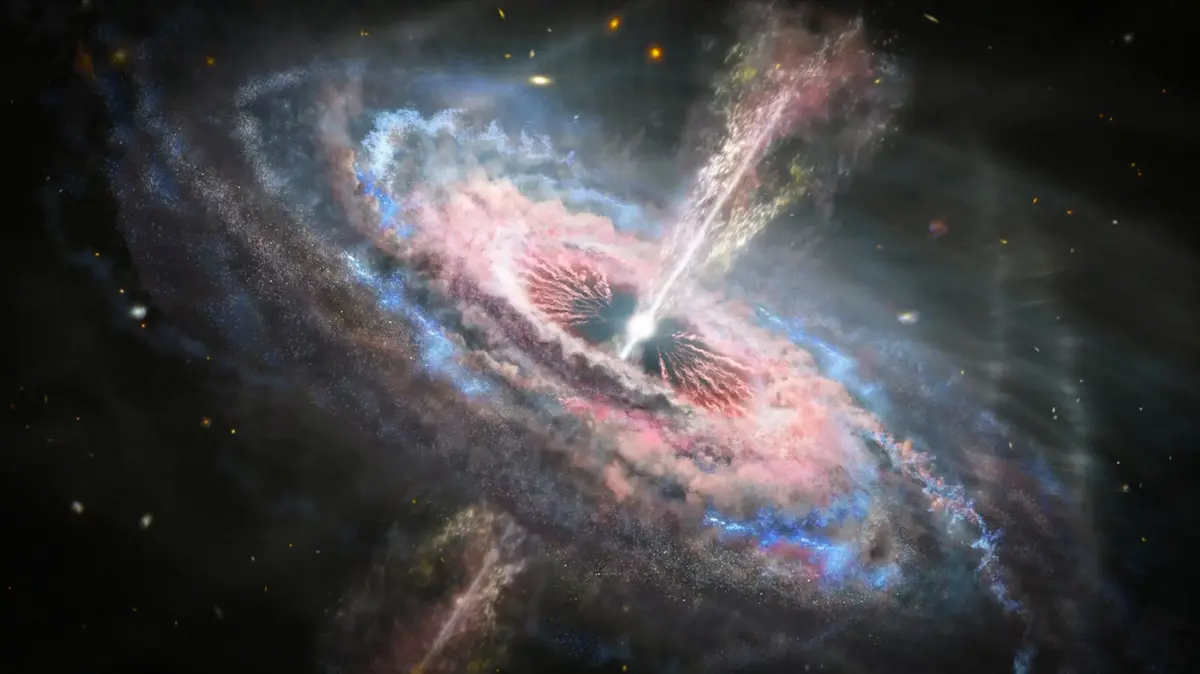Quasar/Official website, NASA, ESA and J. Olmsted (STScI)
Scientists from Australia have discovered the brightest object known in the universe - a quasar 500 trillion times more powerful than our sun.
Located in a galaxy about 12.8 billion light-years from Earth, the quasar is powered by the fastest-growing black hole ever detected.
The mass of the black hole is about 17 billion suns, and it "swallows" an entire sun every day.
Quasar is an abbreviation of quasi-stellar radio source ("quasi-stellar radio source"), since quasars were first identified in the 1960s in observations as radio waves from an unknown source.
It is an unusually energetic sky gram, located in the center of an active galaxy, in the center of which is a black hole.
"It's like a giant magnetic storm at a temperature of 10,000 degrees Celsius, with lightning everywhere and winds blowing so fast that they would circle the Earth in one second," explained Professor Christian Wolff, the lead researcher from the Australian National University (ANU).
"This magnetostorm is seven light years across, which is 50% more than the distance from our solar system to the nearest star in the galaxy, Alpha Centauri."
"It's like a huge magnetic storm at a temperature of 10,000 degrees Celsius"/ShutterStock
Dr. Christopher O'Cancan, a co-author of the study, added that it was surprising that the quasar remained undetected for so long, "it was literally hiding under our noses." The discovery of the quasar, published in Nature Astronomy, was made possible through a collaboration between researchers from the ANU, expect European Southern Observatory (ESO), University of Melbourne and Sorbonne University in France.
at an exclusive discount
The Israeli company that invented hair removers does it again
In collaboration with Epilady
"Part of the discovery is shock and awe, to imagine this hellish place ... these conditions and the fact that nature is capable of producing something so extreme from what we previously thought," Wolff shared.
"But there is also a side of joy and pride - we found it! Nature doesn't make it easy for us, but it's like 'Oh, here you are!'"
More on the same topic:
black hole
NASA
galaxy

